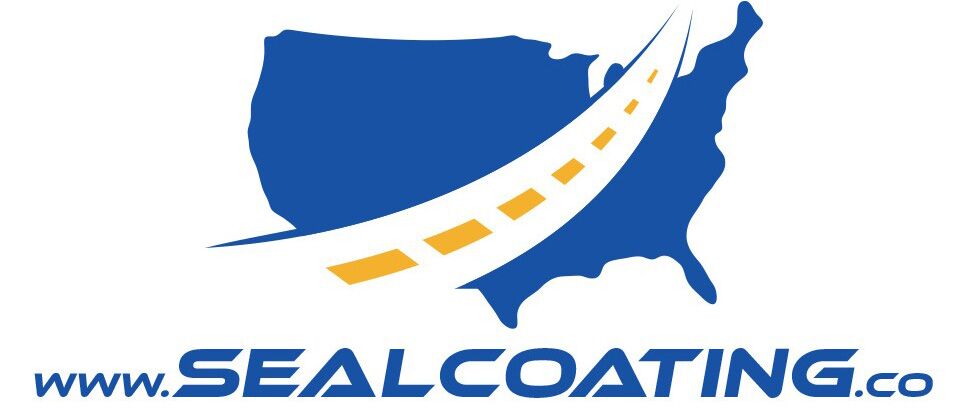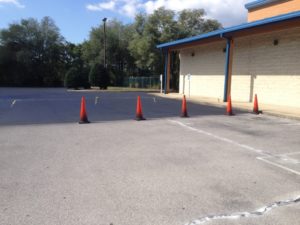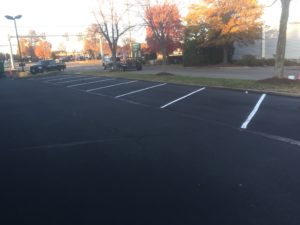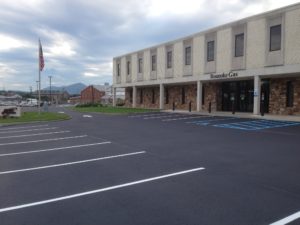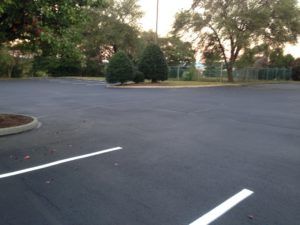Why You Need an Asphalt Pavement Management Plan
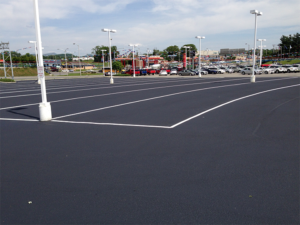 An asphalt pavement maintenance plan is a coordinated program of paving services that work together to help your pavement attain its maximum life in the most cost-effective manner. Whether you are responsible for a single parking lot or all pavements at numerous locations, a well-designed, professionally executed plan can provide you with a variety of benefits.
An asphalt pavement maintenance plan is a coordinated program of paving services that work together to help your pavement attain its maximum life in the most cost-effective manner. Whether you are responsible for a single parking lot or all pavements at numerous locations, a well-designed, professionally executed plan can provide you with a variety of benefits.
Why You Need an Asphalt Pavement Management Plan
What Are the Benefits of a Professional Pavement Management Program?
The primary benefit is that your pavement can have a much longer life, maximizing your return on the money you invested in its installation. A neglected pavement can have its useful life reduced by half or more. While an asphalt pavement that receives proper maintenance throughout its life can serve you for two or three decades, a neglected pavement can fail completely in less than 10 years. However, there are other benefits you can gain from a pavement maintenance plan.
1. It can make it easier for you to budget for your parking lot maintenance over multiple years. Your plan will specify how often you should have your contractor apply sealcoating, for example, or when you will likely need an asphalt overlay.
2. With a professional contractor assisting you, you do not need to worry about missing an essential service. You will have access to a schedule that shows when you should have crackfilling and other repairs performed.
3. Your plan can be tailored specifically for your pavement. The current age and condition of your pavement, your plans, and your budget can all be considered. When working with your contractor, you may discover innovative technologies or products about which you are unfamiliar, including infrared asphalt restoration or special additives for asphalt sealcoating Richmond pavements.
4. Professional preventive maintenance can make your pavement safer. Eliminating hazards that could trip pedestrians or unseat cyclists, maintaining an orderly flow of traffic, and reducing or eliminating congestion, confusion, and obstructions can all enhance safety.
What Does an Asphalt Management Plan Include?
As each pavement can have different issues, your plan may vary. However, most asphalt management plans include all or most of the following.
1. Your contractor will inspect and evaluate your pavement. Areas that are subjected to high levels of stress, damage patterns, drainage issues, and traffic flow will be identified and analyzed. Parking lots will also be checked for visible stripes and legally required pavement markings. Inspections should be conducted at least once every year.
2. After assessing your pavement, your contractor will recommend the procedures that are needed and their frequency. Your contractor will help you establish your priorities. For example, if your pavement has a large pothole in a high-traffic lane, that repair will normally need to be prioritized over several small cracks in a seldom-used area of your parking lot.
3. Although your schedule may vary, most contractors in the Richmond area recommend crackfilling every year, sealcoat applications every two years, and installing an overlay about every 12 years.
If you are interested in getting the most value for the money you spend on your asphalt pavement, contact US Asphalt Maintenance. We have over 35 years of industry experience, an impeccable reputation, and the skills and equipment to deliver high-quality work at reasonable prices. Our services include asphalt sealcoating, crack repairs, parking lot striping and pavement markings, and pavement maintenance programs. You can call us at 804-625-7325 or complete our online form to request a free quote.

